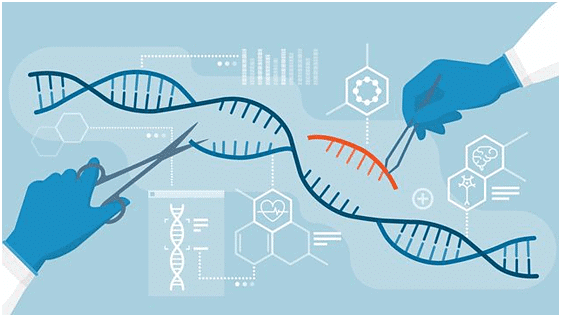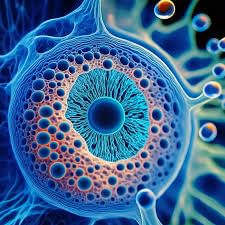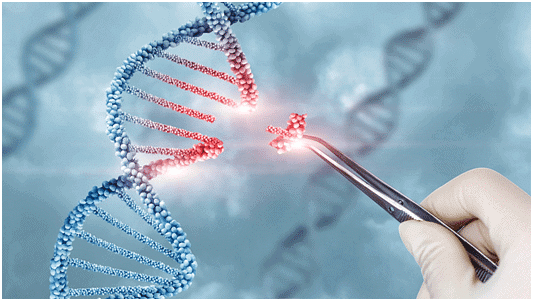Biotechnology -2 | General Awareness for SSC CGL PDF Download
| Table of contents |

|
| Genetic Engineering |

|
| Cloning |

|
| Cloning Vectors |

|
| Stem Cells |

|
| Gene Therapy |

|
| Genetically Modified Organisms (GMOs) |

|
| Genetically Modified Crops |

|
Genetic Engineering

- Genetic engineering is the direct manipulation of an organism's genome using advanced DNA technology. It involves inserting foreign DNA or synthetic genes into the target organism.
- Example: Adding genes to plants to make them resistant to pests or herbicides.
Cloning
Cloning is the process of producing populations of genetically identical individuals asexually.
Steps in DNA Cloning
- Fragmentation: Breaking a DNA strand into smaller pieces.
- Ligation: Joining DNA fragments in a specific sequence.
- Transfection: Introducing recombinant DNA into host cells.
- Screening and Selection: Identifying and selecting cells that have successfully incorporated the new DNA.
Types of Cloning
- Molecular Cloning: Used in various biological experiments and practical applications, including genetic fingerprinting and large-scale protein production.
- Organismal Cloning (Reproductive Cloning): Creating a new multicellular organism genetically identical to another. An example is Dolly, the first mammal cloned from an adult cell.
Human Cloning
- Therapeutic Cloning: Cloning adult human cells for medical purposes, such as regenerating damaged tissues.
- Reproductive Cloning: Creating cloned human beings.
Cloning Vectors
Cloning vectors are small DNA pieces that can carry foreign DNA fragments for insertion into host organisms.
Types of Cloning Vectors
- Plasmids: Circular DNA molecules in bacteria that replicate independently and can carry antibiotic resistance genes.
- Phage: Bacteriophage derivatives that can incorporate foreign DNA without disrupting their life cycle.
- Cosmids: Combine plasmid and phage features, used for cloning larger DNA fragments.
- Bacterial Artificial Chromosomes (BACs): Based on bacterial mini F-plasmids, usually found in E. coli, for cloning very large DNA fragments.
- Yeast Artificial Chromosomes (YACs): Artificial chromosomes with yeast elements, used to clone large DNA fragments.
Stem Cells

Stem cells are special cells that can develop into various cell types, such as muscle or brain cells, and repair damaged tissues.
Properties
- Self-renewal: Ability to undergo numerous cell divisions while remaining undifferentiated.
- Potency: Capacity to differentiate into specialized cell types.
Types
- Embryonic Stem (ES) Cells: Derived from the inner cell mass of a blastocyst, these pluripotent cells can differentiate into multiple cell types.
- Adult Stem (AS) Cells: Found throughout the body after embryonic development, these cells are multipotent and generally generate cell types related to their tissue of origin.
Gene Therapy

Gene therapy uses DNA as a therapeutic agent to treat diseases by correcting gene defects.
Types of Gene Therapy
- Somatic Gene Therapy: Introduces therapeutic genes into somatic (body) cells, affecting only the treated individual.
- Germ Line Gene Therapy: Modifies germ cells (sperm or eggs), making genetic changes heritable and passed on to offspring.
Genetically Modified Organisms (GMOs)
GMOs are organisms whose genetic material has been altered using genetic engineering techniques.
Modification Methods:
- Gene Gun (Biolistics): Injects genetic information into cells, commonly used in plants.
- Microinjection: Directly injects recombinant DNA into the nucleus of animal cells using micro-needles or pipettes.
- Uses: GMOs are used in research, medicine, and agriculture, such as producing pharmaceutical drugs and genetically modified crops.
Genetically Modified Crops
- Crops engineered to have desirable traits like pest resistance, herbicide tolerance, or improved nutritional value.
- Examples:
- Golden Rice: Engineered to produce beta-carotene, a precursor of vitamin A, to combat vitamin A deficiency.
- Golden Rice 2: An improved version of Golden Rice with significantly higher beta-carotene content.
- Flavr Savr Tomato: Modified using antisense RNA technology to slow down the ripening process and extend shelf life.
- Canola: Derived from rapeseed or field mustard, genetically modified for better oil quality and production.
|
448 videos|1497 docs|288 tests
|
FAQs on Biotechnology -2 - General Awareness for SSC CGL
| 1. What is genetic engineering and how is it used in biotechnology? |  |
| 2. How does cloning work and what are the ethical concerns surrounding it? |  |
| 3. What are cloning vectors and how are they used in genetic engineering? |  |
| 4. What are stem cells and how are they important in medical research and treatment? |  |
| 5. How are genetically modified crops developed and what are their advantages and disadvantages? |  |




















